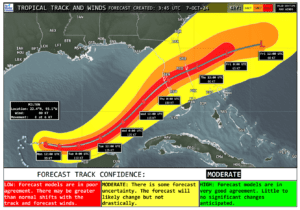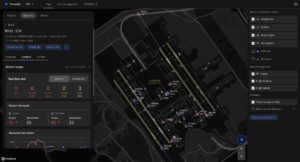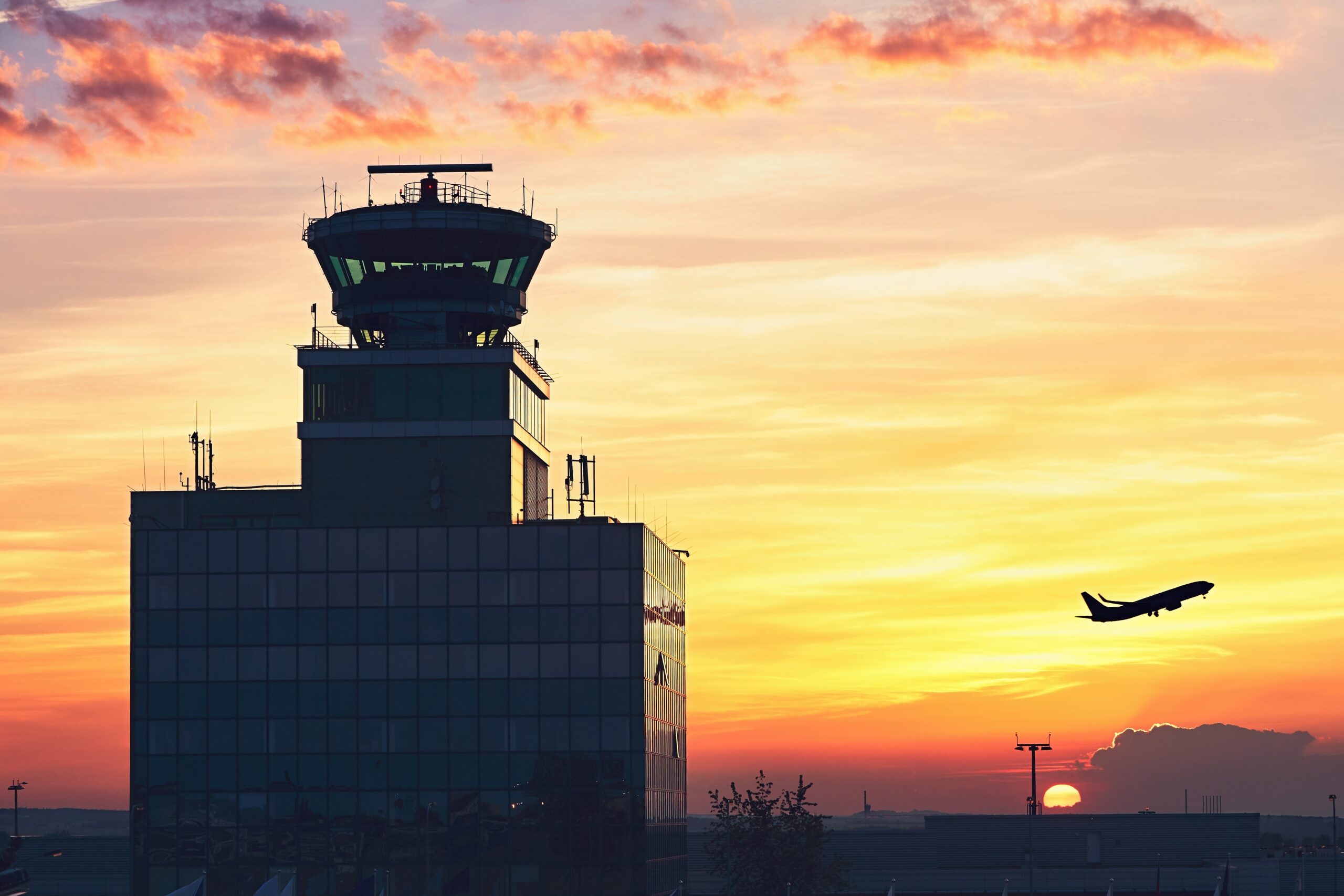Weather intelligence for the future: Crafting a strategic enterprise approach to changing environmental conditions
Continue readingEditor’s note: This article originally published in Flight Global (June 17, 2025)
- Airlines face seasonal weather risks that can disrupt flight schedules and increase costs. Accurate forecasting helps reduce delays and improve planning.
- The Weather Company’s technology gives airlines early insights into threats like tropical cyclones, winter storms, and turbulence.
- Advanced forecasting tools like GRAF and TrACR offer specific guidance for flight paths and airport operations.
- Weather intelligence improves seasonal planning, safety, fuel efficiency, and on-time arrivals, even in challenging aviation weather conditions.
Airlines face a range of seasonal weather challenges – from summer turbulence to winter storms. These conditions can delay flights, raise costs, and put passengers at risk. Managing disruptions takes more than reacting in real time. It requires forward-looking, accurate weather intelligence that supports better decisions. By combining long-range forecasts with mid-term risk outlooks – such as 3-, 5-, and 7-day storm forecasts – airlines can adjust routes and reduce delays before severe weather hits.
To address these critical forecasting needs, The Weather Company delivers the world’s most accurate forecasts,1 and advanced meteorological intelligence that powers aviation decision making. Our Weather Mix (WxMix) system delivers mid-term aircraft weather forecasts using nearly 100 global models. It also includes The Weather Company’s proprietary Global High-Resolution Atmospheric Forecasting System (GRAF) for high-resolution updates. WxMix provides decision points up to 10 days in advance to help aviation leaders stay ahead of developing weather. These tools give airlines the confidence to adjust routes, allocate resources, and keep operations running smoothly even when the forecast turns volatile.
How seasonal weather disrupts airline operations
Seasonal weather puts constant pressure on airline performance. Each season brings its own set of risks. Winter storms can shut down airports with snow, ice, and low visibility. Tropical systems like hurricanes can force reroutes and cancellations across entire regions. In summer, turbulence from jet streams and storms causes mid-air instability, extra fuel use, and injuries.
Turbulence is a growing concern in aviation worldwide, and the changing climate is making it worse. A 2023 study from the University of Reading found skies are now 55% bumpier than 40 years ago.2 This finding demonstrates why airlines need accurate, near-term weather forecasts to help reduce risks and keep flights safe.
With these challenges in mind, airlines need more than daily weather updates. They require weather forecasts with a clear risk outlook for better contingency planning and resource allocation.

A clear and concise visualization of the storm’s anticipated impact
The power of mid-term forecasting for operational readiness
Advanced forecasting helps airlines get ahead of seasonal disruptions. The WxMix system delivers insightful and actionable mid-term outlooks, including 3-day tropical forecasts and 7-day winter storm projections. These insights let airlines adjust routes, move crews and aircraft, and prepare before severe weather arrives.
When airlines use these forecasts in aviation planning, they can make smarter choices about schedules, fuel use, and aircraft placement. For example, suppose a winter storm is expected at a key hub. In that case, they can move planes, reassign crews, and alert passengers in advance. If mid-term outlooks show an active hurricane season, airlines can update contingency plans early for the regions most at risk.
Real-time and near-term tools like GRAF and terminal airspace convective risk (TrACR) work alongside mid-term forecasts. They provide hyper-local, short-range updates to support last-minute decisions on flight paths, airport operations, and crew planning. With high-resolution weather intelligence, flight planners can make quick adjustments that keep flights on time and avoid disruptions.
Enhancing flight schedules and airport operations
Weather delays and cancellations cost airlines millions each year.3 That’s why operational efficiency is so important. The Weather Company offers real-time and near-term tools like Maverick™ Dispatch, Pilotbrief®, and Weather Data APIs. These help airlines manage flight schedules and keep airport operations running smoothly. The tools provide live updates on turbulence, storms, and other weather risks, giving dispatchers and pilots the data they need to act fast.
Maverick Dispatch is a flight-tracking tool that gives airlines a clear view of short-term weather risks. It combines real-time meteorological data with flight operations to help dispatchers reroute flights, choose alternate airports, and avoid delays before they grow. The TrACR feature adds hyper-local convective weather forecasts to show what to expect along arrival and departure routes.
It also includes Global Surface Movement (GSM) – a form of advanced airport operations technology – that gives near-real-time visibility into airport surfaces. It tracks aircraft positions, taxiway conditions, and gate availability. By showing where slowdowns might happen, GSM helps airlines cut tarmac congestion, save fuel, and improve turnaround times.

GSM quickly visualizes ramp, taxiway, and runway conditions
Real-world application: How Breeze Airways navigated hurricane disruptions
During the 2024 hurricane season, Breeze Airways used The Weather Company’s aviation tools to manage two major storms that hit Florida. While many airlines faced extended delays, Breeze kept operations intact and returned to service faster.
Using real-time flight tracking and live weather data, the dispatch team monitored aircraft and made quick decisions. They rerouted flights, adjusted schedules, and kept crews and passengers safe. As soon as Tampa and Fort Myers airports reopened, Breeze resumed service and avoided the long delays other carriers faced.
The Breeze case study shows how advanced forecasting helps airlines manage seasonal weather changes. With mid-term outlooks and real-time tools, airlines can make faster decisions, protect passengers, and stay on schedule even during major storms.
Improving passenger safety and comfort
Beyond operational efficiency, weather intelligence is vital for passenger and crew safety. The Weather Company’s Total Turbulence Alerting system gives pilots live updates to adjust altitude and reduce in-flight instability. Tools like Maverick Dispatch and Pilotbrief provide real-time data, which helps dispatchers reroute flights to avoid bad weather.
Turbulence is a growing issue, made worse by a changing climate. With near-term forecasts from GRAF, airlines can reduce in-flight instability and keep passengers more comfortable.
The Weather Company also provides METARs and TAFs – short-range forecasts that give dispatchers the most up-to-date weather before departure. These tools allow dispatchers to monitor developing aviation weather conditions, which helps avoid last-minute delays and cancellations.

Access forecast conditions and see how the forecast has been changing over time
A smarter approach to seasonal travel
Seasonal travel brings a range of weather risks year round. Airlines that use a layered weather strategy – built on mid-term forecasts and powered by near-term and real-time tools – can increase resilience and reliability.
The Weather Company offers solutions with industry-leading accuracy that include 3- to 7-day outlooks, storm tables, and live systems like Maverick Dispatch. With detailed models and both near-term and real-time data, airlines can plan smarter, react faster, and keep operations running through all kinds of weather.
Let's talk
To learn more about our advanced aviation weather solutions, contact our aviation experts today.
Contact us1 ForecastWatch, Global and Regional Weather Forecast Accuracy Overview, 2021-2024, commissioned by The Weather Company
2 University of Reading, Evidence for Large Increases in Clear-Air Turbulence Over the Past Four Decades, 2023, based on research published in Geophysical Research Letters by Prosser et al.
3 The Weather Company, The impact of weather on international aviation, 2025

